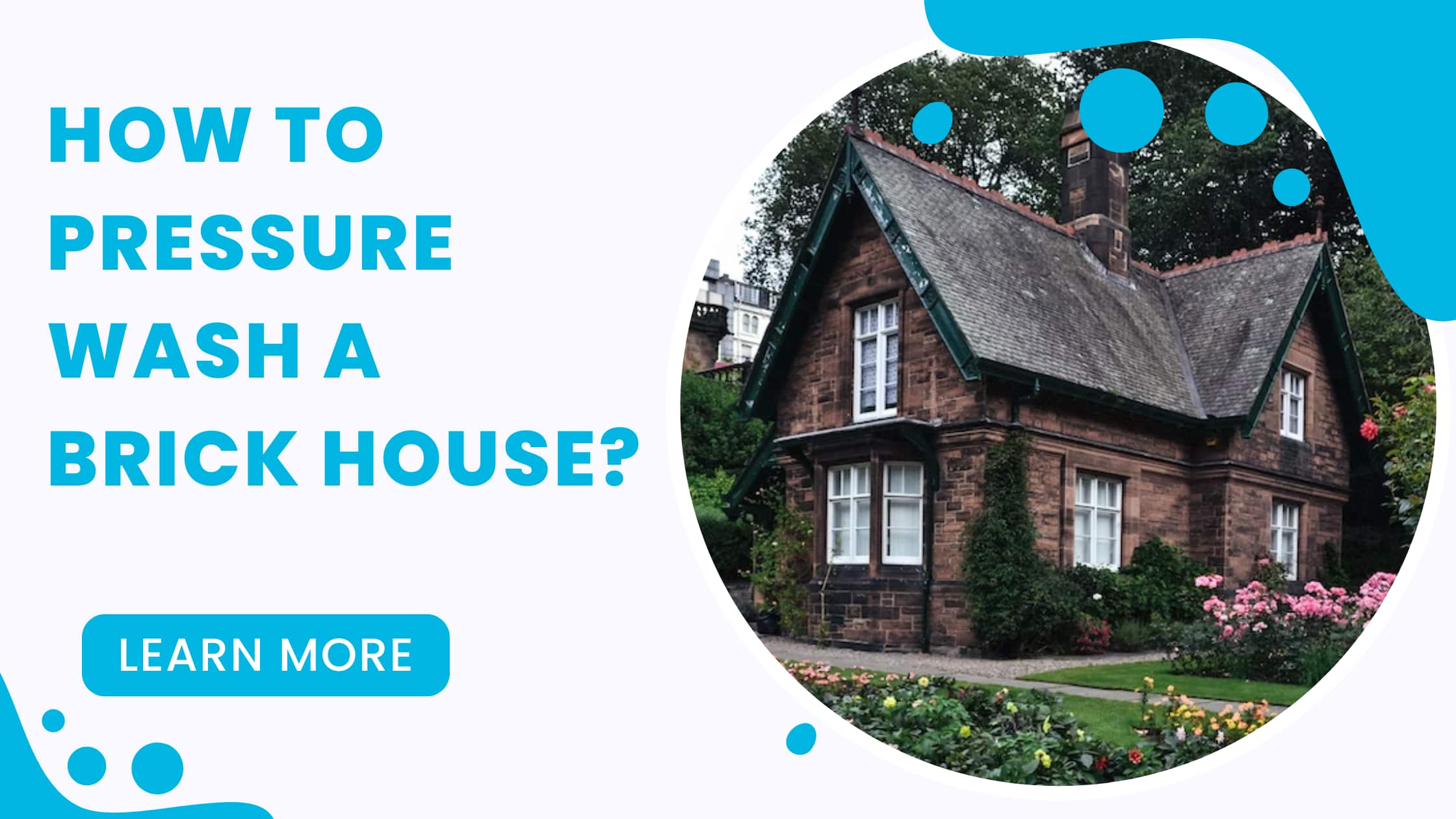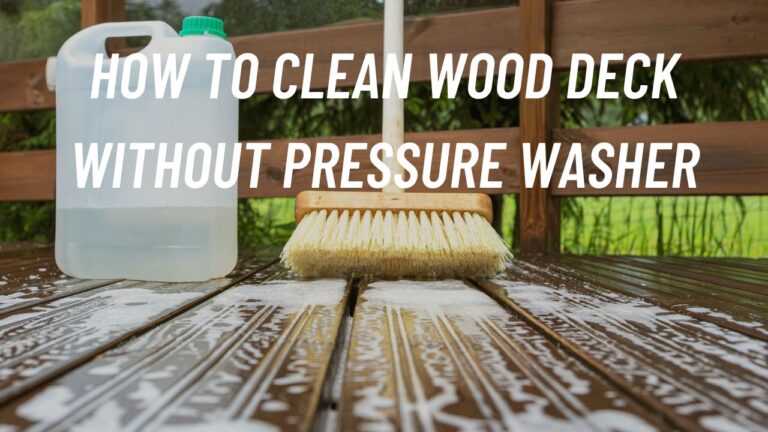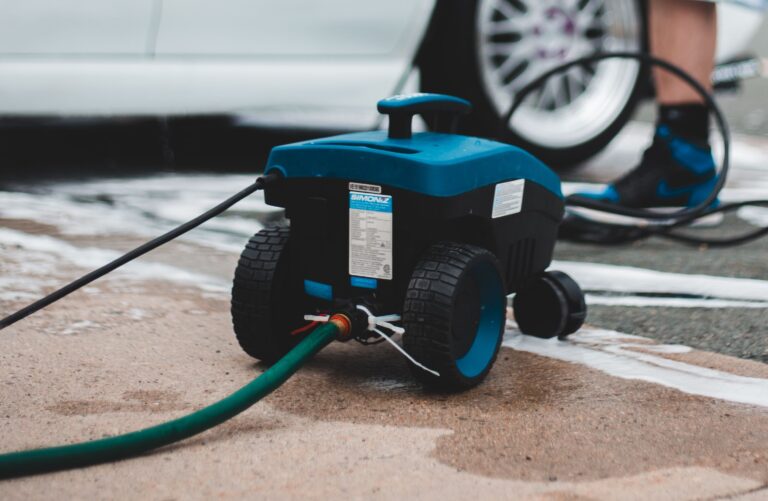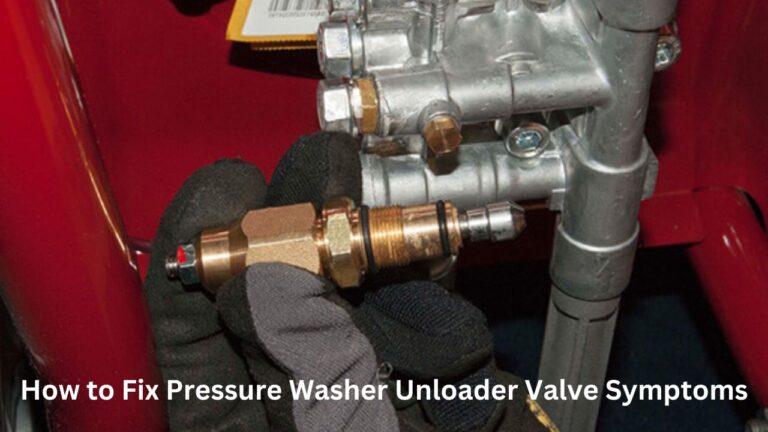How To Pressure Wash A Brick House?
Only a few things can portray sophistication throughout the centuries, and a brick house is one of them. Its timeless look speaks nothing but “class” that you and everybody else so love. So, it’s only natural that you’d actually be excited to take proper care of it.
Why you’d want to wash your brick house frequently?
As with anything else outside, your brick house isn’t immune to the nasties of the weather. It can accumulate dust, dirt, and grime, deteriorating your brick house’s rich colors and fresh look. And if algae or moss buildup… well, that’s even worse for the structural integrity.
Before things take a turn towards an even crueler outcome, the only solution is to wash your brick houses often.
But let’s face it, we are too busy for this tedious job. And none of us can get to it as frequently as we should. Which begs the question: how often to pressure wash a brick house?
The good news is that it is recommended to wash brick houses once every one-three years. Granted, if you can do it the right way and do it effectively so the wash lasts for years to come.
Is pressure washing the right way to clean brick houses?
As with any material, brick requires proper maintenance to maintain longevity, but is pressure washing recommended for it? Absolutely! Only if you’re extra careful!
Using too high pressure will result in cracks which can seep interior water damages; not to mention, the cracks are super ugly.
Pressure Washer PSI For Brick House
A 500-1500 pressure washer PSI for a brick house is generally recommended for a damage-free wash, with 800 PSI being a preferable average PSI.
Still, you shouldn’t hover at a single place as the concentrated jet spray can invite damage. And under no circumstances will you exceed 2,000 PSI for pressure washing your brick house.
Steps To Pressure Washing A Brick House
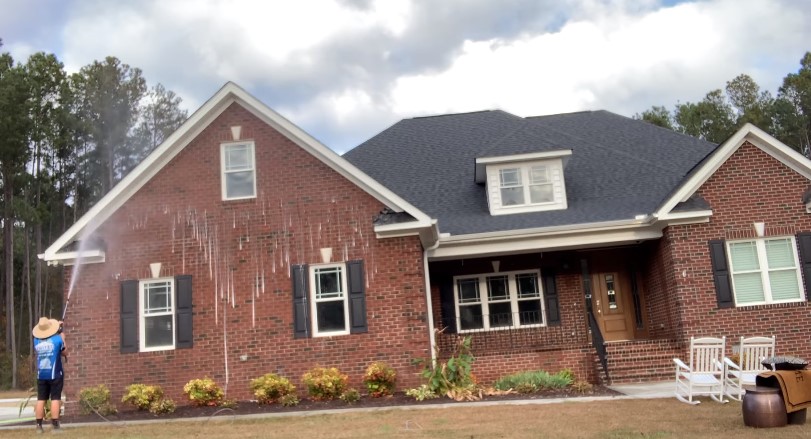
Step 0: Evaluation and Pre-Processing
Before we begin pressure washing, here are some pre-measures to take so you can safely wash your brick house and avoid any unnecessary water damage.
Step 0.1: Patch The Cracks
This needs to be done at least a week before you begin washing. Patch any visible cracks and damaged mortar joints between the bricks and let it harden for 6-8 days. This prevents water from seeping behind the bricks – which can cause mold growth in your walls.
Step 0.2: Cover Windows And Electrical Outlets
Unless you are Thor and like some electricity flowing through you, you might want to cover and protect all exposed electrical outlets.
Okay, that was an exaggeration, and there are little or no chances of you being electrocuted. However, you should cover all exposed electrical outlets to avoid a short circuit due to water damage.
The same goes for exterior openings such as windows, doorways, etc. Use plastic wraps or bags because you don’t want wet curtains, bedsheets, or carpets, as drying inside the house can cause unpleasant water smells.
Another step in pre-processing is preparing the brick-cleaning solution for the pressure washer. We will cover that in the applying detergent section.
Step 1: Wet The Brick
Now that we have taken care of some pre-measures, it is time to wash your brick house.
Start by thoroughly soaking the surface with plain water (not hot water because we aren’t power washing). This will remove all the loose dirt and prepare the surface for applying detergent.
Bottom-up Approach
Use the bottom-up approach to spray water on the brick surface. Ensure an even soaking; the bottom-up approach will help you because it prevents uneven water streams from running down.
This approach is different than when washing vinyl siding – which uses a top-down approach to prevent water from getting into the folds. Click here to read about how to pressure wash vinyl sidings.
Step 2: Apply Soap/Detergent
Apply the soapy solution using the appropriate wand attachment or a foam cannon. If you don’t have either, don’t worry. You can still go with the ol’ reliable bucket and mop approach.
Here are some tips for applying the cleaning solution:
-
Spray in a bottom-up approach.
-
Use less pressure and more cleaning solution.
-
Let the applied solution sit for 5-10 minutes to loosen up all attached impurities.
-
Bricks are porous, so use plenty of detergent and water to cover all areas.
-
Make sure to use an appropriate cleaning solution for both brick houses and pressure washers.
Step 0.3: Brick Cleaning Solution For Pressure Washer
Tougher stains like oil, rust, or stubborn dirt require the right cleaning solution. Our favorite is the multipurpose vinegar solution, which almost always does the job.
Vinegar solution:
Vinegar is a natural and environment-friendly cleaning agent, so it is our favorite. You can prepare it by mixing equal white vinegar and water in a bucket.
Mild Detergent Solution:
Use a detergent that is used for general household cleaning. Avoid one with harsh chemicals or bleach.
Oxygen Bleach Solution:
Oxygen bleach, such as sodium percarbonate or hydrogen peroxide, can effectively remove stains and discoloration from bricks. Be careful with this one and follow the instructions on the product packaging for an appropriate dilution ratio.
When applying a cleaning solution, it is always a good idea to test it in a small inconspicuous area. This will help you avoid big damage or discoloration on the brick structure.
Step 3: Scrub Away
Now it is time to brush away the stubborn stains. With the right detergent, they should come off easily.
You can use a rotary scrub brush, as it is a lesser abrasive technique. Avoid a wire brush because it is too harsh and might strip away paints and finishes. Sometimes, the metal bits can be left behind, which will rust and stain over time.
Step 4: It’s Time To Rinse
You used the cleaning solution, and now it is time to rinse it. Use delicate settings between 500-1500 PSI, and spray in a circular pattern, never spraying concentrated spray at a single spot.
Use a top-down approach to remove the cleaning detergent. Do several passes to make sure you get all areas.
Step 5: Apply The Sealant
Remember, brick houses aren’t cleaned as often? So, we want to clean them so that it lasts for a long time. Therefore, you’ll need to apply the sealant to maintain the brick’s longevity, give it its shine, and offer extra protection against outside contaminants.
While a pressure washer makes the job substantially easier; however, if you don’t have one on you, that’s no reason to skip cleaning your brick house.
Start by filling a bucket with warm water and cleaning solution and applying it on the brick surface with a scrub brush.
Go in a circular motion, focusing more on areas with visible stains, dirt, or mold. Water from a regular garden hose will do the trick when you’ve gotten to all areas. Granted, the pressure won’t be as strong as a pressure washer, but it will get the job done.
You can use nozzle attachments for the garden hose to control water flow without going back and forth to the faucet. Some of these can even give you some pressure boost on your garden hose.
Related How to guide:
FAQs
Is it OK to pressure wash a brick house?
Yes, it is OK to pressure wash a brick house. It makes things much easier, faster, and more efficient than plain washing. However, be careful not to use elevated pressures. A 500-1500 PSI is recommended for pressure washing a brick house. Don’t exceed 2000 PSI, as it could be dangerous for brick surfaces.
What’s the best way to pressure wash a brick house?
The best way to pressure wash a brick house is to start by rinsing the bricks in a bottom-up approach. Use a low-pressure setting; don’t spray in a concentrated spot for too long. Now, apply the cleaning solution again in a bottom-up approach. Next, scrub away the dirt and rinse the detergent with the pressure washer, this time with a top-down approach. Do multiple passes and apply the sealant when the water dries up.
What chemicals are used to clean brick houses?
Vinegar is an eco-friendly multipurpose ingredient that can be used to prepare cleaning solutions for brick houses. Mix TSP (Trisodium Phosphate) powder in water to prepare the cleaning solution. Mild household detergents also work well to clean brick houses.
Do you need soap to pressure wash the brick?
Using soap or detergent is recommended to pressure wash brick. This reduces the effort you must put in to remove even slightly tough stains. Furthermore, it reduces the pressure washer PSI required to clean the brick – too high PSI can cause damage to delicate bricks. However, avoid using soap with harmful chemicals for brick cleaning.
Final Thoughts
Brick houses need to be cleaned once every one to three years, and a pressure washer will help you do that with less than half the effort. Assess your brick house for damages before beginning your pressure washing. Also, cover all exposed electrical outlets to avoid any circuitry damage.
Use a pressure washer at a lower PSI to avoid damaging the delicate brick structure. Use plenty of cleaning solutions to get all areas of the porous brick house. Finally, do multiple passes to rinse off all the impurities properly.
Remember, applying a quality sealant afterward is recommended once your brick house dries.

